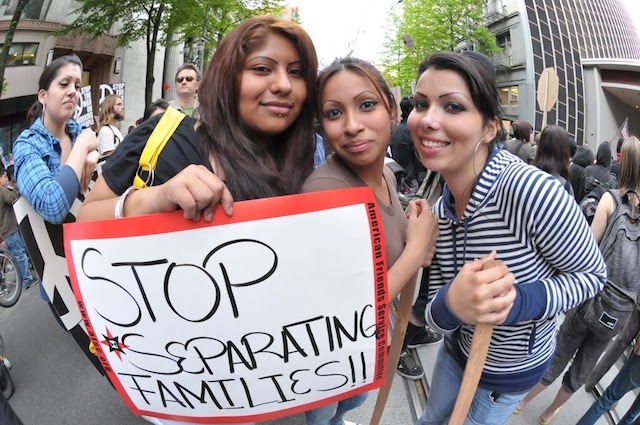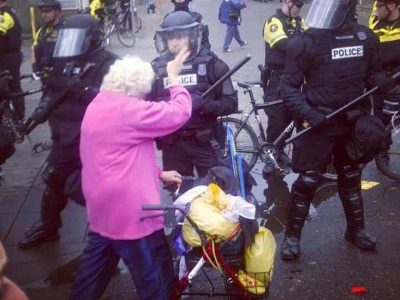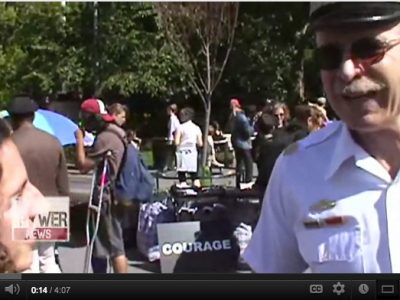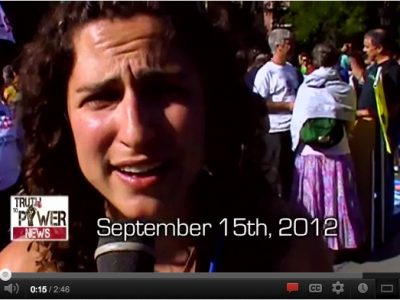Story by Pete Shaw
In recent weeks there has been widespread media coverage of the plight of refugee children entering the US after fleeing violence in Central America. While those numbers had been steadily increasing over the past few years, they jumped to crisis levels a few months ago. Despite its obligations under international law and its requirements under its own statutes, the US government has resisted humane treatment of these children. The Democrats, led by President Obama, are as always tentative about taking action that could be used against them, while the Republicans kowtow to the extreme racism that has become the heart of their party.
Since opening in late June, the makeshift immigrant detention center in Artesia, New Mexico has housed approximately 600 women and children without documentation, with plans to increase capacity to 800. Since the children are not unaccompanied–the ones in Artesia are with their mothers–they do not receive the same treatment that refugee children are required to receive according to the William Wilberforce Trafficking Victims Protection Reauthorization Act of 2008 even as like those refugee children receiving so much media attention, they too–along with their mothers–are fleeing violence in their home countries.
At the Center for Intercultural Organizing on August 13, there was a meeting to educate people about events in Artesia and what can be done to put a halt to the injustices being committed in Artesia.
Artesia is more or less in the middle of nowhere. Some members of the Immigrant Law Group (ILG) recently went to the middle of nowhere to provide what help they could. That was no mean task. “When you’re there, time happens at a different pace,” said Stephen Manning–something he called Artesia time.
What is Artesia time? Consider this: the average immigration court case takes 550 days before a decision is rendered. In Artesia, prior to the arrival of ILG and attorneys from the American Immigrant Lawyers Association (AILA), the average time between a person being placed in the prison and having her case decided by an immigration judge was 17 days.
“In Artesia,” Manning said, “things happen fast.”
Painfully so.
According to Manning, this is by design. “Artesia is a deportation machine. The government wanted to make a statement to people from Central America: be forewarned–if you want to flee here you are going to be detained and deported.”
Most people do not just get up and go from their homes on a whim. There needs to be a reason. Extreme violence has been breaking out in El Salvador, Guatemala, and Honduras–where nearly all the people jailed in Artesia come from–places that in recent history, often due to US foreign policy, have known extreme violence. That violence now largely comes from areas where drug cartels and gangs have become the de facto governments.
Yet in Artesia a blind eye is being turned toward the plight of refugees. Manning said only one person has been granted release, and that was because he was a US citizen. Manning described “nearly everyone” in Artesia being in “expedited removal proceedings,” a sterile term that means the government is putting these people through the system as quickly as possible with nary a regard to due process, and in nearly all cases readying them to be loaded on planes and sent back to their homes and the violence that brought them here in the first place. In July, according to the United States Citizenship and Immigration Services (USCIS) Asylum Division, an average of 124 people had their cases completed each week. That’s about 18 people a day.
 You have to work very hard to achieve those numbers. Or more accurately, you don’t have to work hard, save for trying to keep secret what you are doing from the US citizenry.
You have to work very hard to achieve those numbers. Or more accurately, you don’t have to work hard, save for trying to keep secret what you are doing from the US citizenry.
When a person applies for asylum in the US, she is given a Credible Fear Interview. Manning said that prior to Artesia, about 80% of asylum applicants passed the interview. In Artesia that number is about 30%.
Kelly Miller, a legal assistant at ILG, was at Artesia. One of the women with whom she worked was from Guatemala and had three children. She had been gang raped, and one of her sons was born out of that rape. That child has a chronic throat condition, and soon after his fifth major surgery, the gang told her that she had one month to pay 25,000 Guatemalan quetzales (about 3,200 US dollars) or it would kill all three of her children. During her Credible Fear Interview her children were in the room with her. She did not want them to hear about the gang rape, so she did not tell the asylum officer conducting the interview. She was not given a credible fear finding despite still having a clearly compelling story.
Manning said that one of his clients–who was later deported in the middle of the night without his knowledge–was never asked if she had experienced domestic violence. Worse, apparently no asylum officer was asking that question of any of these women during their interviews. As one audience member at the meeting pointed out, asking about domestic violence is “Asylum 101.”
When an asylum officer denies an asylum request, an immigration judge can review this “negative fear finding.” In Artesia, that review is conducted over the internet with the judge in Arlington, Virginia. Manning said that during these reviews lawyers are rendered “mute observers.” They may not address the judge. Their presence is not recognized.
Women in Artesia have been denied access to counsel, and they have not been told of their legal rights, including their right to free counsel. When they do have counsel, those lawyers are not informed of any proceedings–from interviews to deportations. Detainees are supposed to be able to use phones to call anyone anywhere, but the only phones they can use are in the possession of guards, who–if they let them use them at all–limit their minutes. And those guards–all of whom are men–have guns, something that will surely not prove comforting to a rape survivor or anyone fleeing the violence of armed gangs.
Not one of the 548 people in Artesia who has had her case completed has won her immigration hearing.
“I was horrified to hear story after story of our government’s atrocious human rights violations against these women and children,” said Miller, “many of whom had already lived through unimaginable violence and endured harrowing journeys to the United States.”
Julieta Cordova, also a legal assistant at ILG, talked about a conversation she had with an ICE officer. He waxed philosophically about the women and children in Artesia. “Life is hard, but that’s how life is. Sometimes if you want a good thing in life, you have to suffer.”
People are starting to do something about putting a stop to that suffering. According to the USCIS, from August 4–not long after the arrival of legal teams from AILA and ILG–through August 7, the average number of cases completed in a day in Artesia had dropped to about 10. “The immigration court’s mission,” said Manning, “is to do justice, and we were there to remind them of that.”
Manning said that about 300 of the 600 people in Artesia now had representation. With more legal aid on the way–and thus the ability to file motions and do all the work that ensures due process of law–that number will continue dropping.
But why does Artesia even exist? And why is a similar prison, dedicated to removing immigrants from the country as quickly as possible, being built in Texas?
Manning described Artesia as a model, and it is a model that should be stopped. Wednesday’s meeting ended with people discussing how they would set up resistance to Artesia and future Artesias. Time is critical. President Obama has indicated he soon may take some executive action in dealing with the immigration crisis. How wide the scope of his action will depend on how much pressure he feels.
“We need to get a conversation going now,” said Manning, “so if Obama acts on immigration, he includes Artesia. We shouldn’t treat humans this way. Shut it down.”
Want to get involved? Go to Immigrant Law Group’s Facebook page at: https://www.facebook.com/pages/Immigrant-Law-Group/137461792959535?fref=photo







